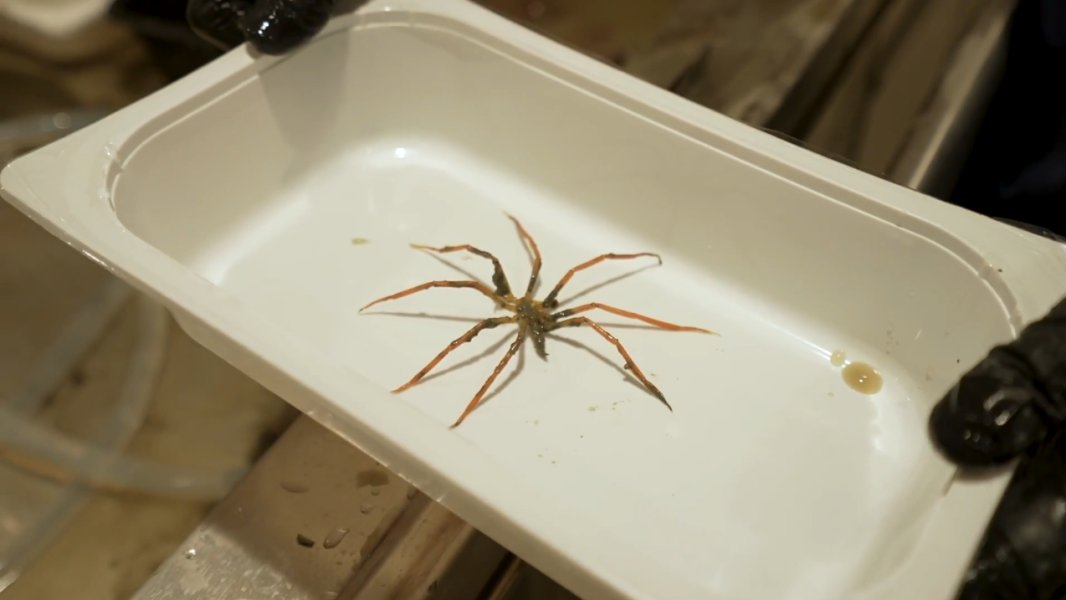
Among the creatures caught by scientists aboard the RSV Nuyina were unusual orange “porpoises” – a type of sea cucumber. (Photo credit: Commonwealth of Australia/AAD)
Scientists have discovered strange inhabitants off the coast of Antarctica, as if they came straight out of the pages of a science fiction novel.
Pink and bulbous 'guinea pigs', palm-sized sea spiders and delicate sea butterflies are just some of the unusual animals brought up from the ocean floor by a team of Australian researchers aboard the icebreaker RSV Nuyina, which is making a 60-day voyage across the Southern Ocean to Denman Glacier.
Some of these unique fauna may not have been previously recorded.
“[We've collected] a really vast diversity of marine organisms, and some of them are probably new to science,” Ian Strugnell, a professor of marine biology at James Cook University in Queensland, Australia, told ABC News.
RSV Nuyina was launched as part of the Denman Marine Voyage project to study the impact of rising sea temperatures on the Denman Glacier, which lies about 3,100 miles (5,000 km) south of Australia and has already retreated 3.1 miles (5 km) between 1996 and 2017/2018. It is considered the fastest melting glacier in East Antarctica.
Throughout the journey, the researchers surveyed the seabed to collect a variety of unusual organisms.
One of the strangest creatures was the porpoise. These unusual animals are a type of sea cucumber and range in length from 1.5 to 6 inches (4 to 15 centimeters). Their name comes from their soft, bloated bodies and short legs, which make them look a bit like pigs. Porpoises live on the ocean floor at depths of 3,300 to 19,500 feet (1 to 6 km) and feed on organic material that sinks from the upper layers of the ocean, sometimes called “marine snow.”
Strugnell noted that the researchers also caught sea spiders “the size of your palm” and starfish “that can be as big as a dinner plate.”

The collected sea spiders were about the size of a human hand.
Sea spiders are not true spiders; they belong to a separate group of arthropods that are more closely related to crabs than to land arachnids. They have eight long, thin legs and small bodies, with some species having a leg span of up to 20 inches (51 cm).
There are more than 1,300 species of sea spiders, which live on the seafloor in a wide range of environments, including depths of up to 13,100 feet (4 km). Their bodies are so small that some of their organs – including parts of the intestines and reproductive system – are located in their legs.
Sourse: www.livescience.com





